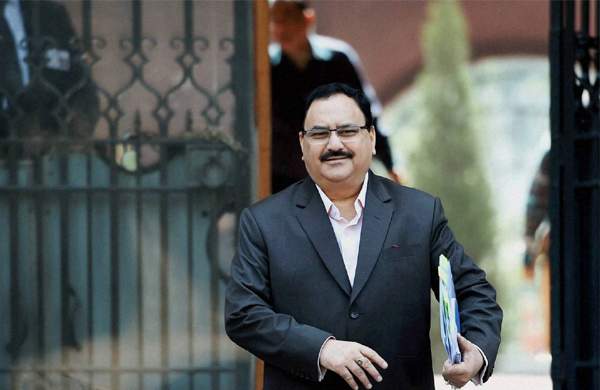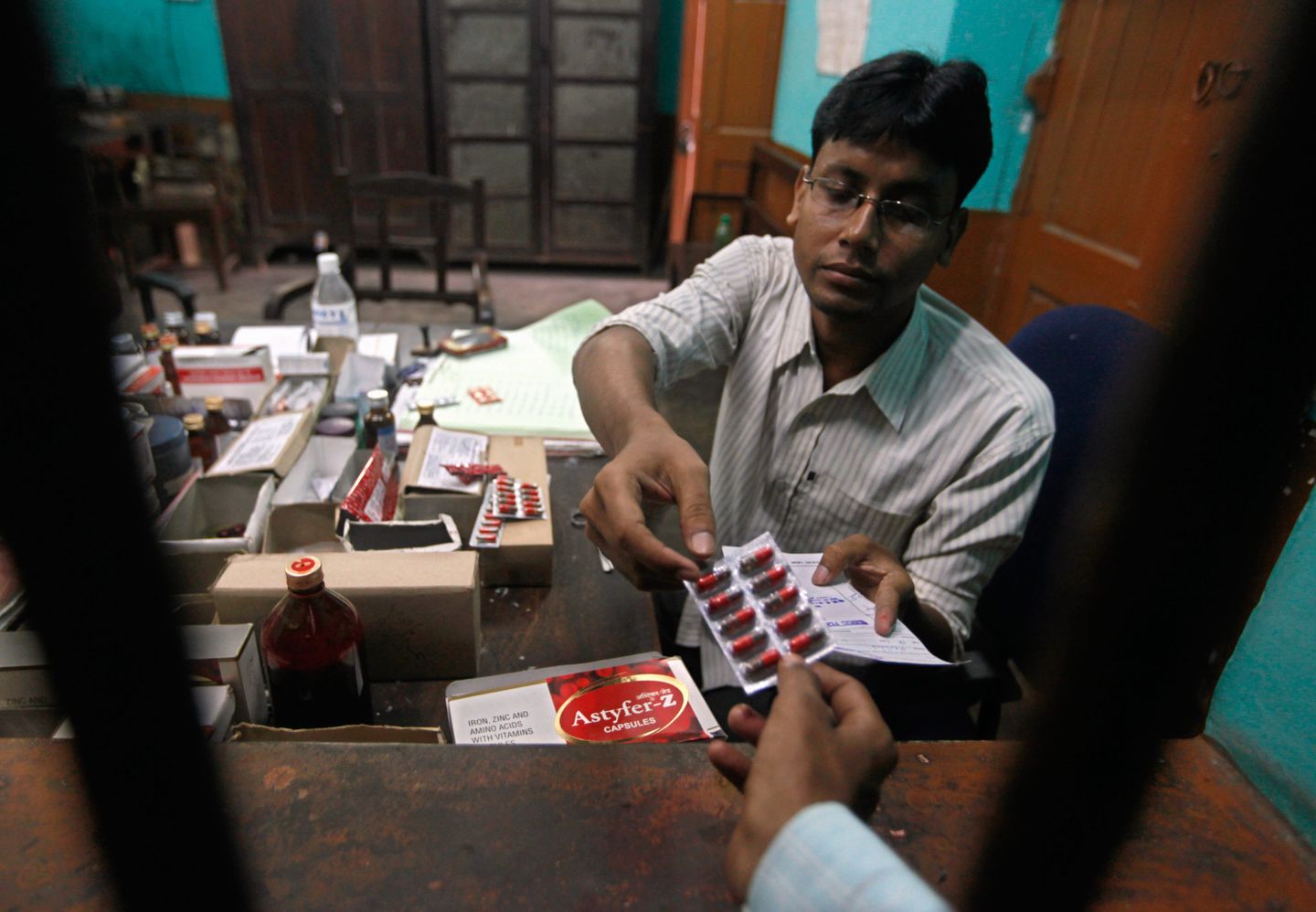
How much will this scheme cost? What is the timeline for its roll out? Will private sector influence cause exploitation? Only NITI Aayog has the answers.

New Delhi: “How much money will the government be spending on insurance premiums in the new Budget announcement?”
“Why did the previous scheme which guaranteed a cover of Rs 1 lakh not take off?”
“We understand the spirit of this move, but can you explain the letter?”
“Why is insurance a good idea?”
A press conference chaired by health minister J.P. Nadda on Friday, a day after finance minister Arun Jaitley announced the “world’s largest healthcare programme,” saw no answers to these questions. The programme is, in fact, a massive new health insurance scheme by which the government has promised to pay the premium on health insurance for ten crore families for a coverage of up to Rs 5 lakh per family. The scheme says it will cover 40% of India’s population.
At the press briefing, questions from journalists came firmly and fast but the answers were mostly limited to assurances that the government would indeed implement the scheme and would be sensitive to concerns raised.
At one point, all reporters were recommended to go to the next press conference on the same issue, which was being held at NITI Aayog, just down the road from the health ministry’s office at Nirman Bhawan.
While the health ministry had no replies on the government’s new insurance programme which has grabbed headlines, NITI Aayog had all the answers.
The packed press conference was chaired by NITI Aayog’s CEO Amitabh Kant, along with Dr Vinod Paul (member), Alok Kumar (adviser on health) and Dr Dinesh Arora (director on health).
With a visual presentation of about 20 slides, NITI Aayog officials laid out all the details for the new insurance programme, including the cost of premiums to the government, the modalities it might take in various states and the timeline for implementation.
Who is paying for this insurance scheme and how much?
The programme will be “fully government supported, no premium payment and no co-payment by beneficiaries,” NITI Aayog’s presentation said, adding: “Government fully committed, no resource crunch for this scheme.”
The scheme will provide insurance coverage to ten crore poor families or 50 crore individuals. The cover of Rs 5 lakh per family per year would have no cap on the size of the family.
Also read: Budget 2018: Jaitley’s ‘World’s Largest Health Programme’ Rejigs Flailing Old Ones
NITI Aayog’s presentation estimated that the cost of premium per family to the government will be Rs 1000 to Rs 1,200. Health ministry sources also confirmed this figure. For this, NITI Aayog says the amount required would be about Rs 5,000 crore to Rs 6,000 crore.
In this Budget, the government has allocated an amount of Rs 2,000 crore. NITI Aayog explained that the Centre would put in 60% of the money in a particular state, and the state would need to put in 40%, and so this allocation would actually swell. In special states, such the ones in the Northeast, the Centre to state ratio would be 9:1. This is the routine way in which centrally sponsored schemes are already administered in India.

What is the timeline for this?
The NITI Aayog presented a timeline of the next few months to journalists and said that the government expects to cover at least 50% of this 50 crore base in the first year after states have accepted the scheme.
By March, NITI Aayog said the scheme might have approval. By this, they are talking about the approval of this scheme by the cabinet. Health ministry sources said a draft is currently with them for submission to the cabinet. March may also see stakeholder consultations.
April would be occupied with “data preparation and revision of package rates.” Health ministry sources said that about 1000 packages were worked out for the government’s previous iteration of the same scheme, which offered only a cover of Rs 1 lakh per family. These would all need to be redesigned for this boosted cover.
“Preparation of IT systems” and setting up of institutions at the national and state level will happen in June. Two sources said the government will now work out a digital system including software which will be installed in the various hospitals empaneled for this programme as well as within the government to manage the claims made and approved.
The government will also be working on “setting up of institutions at national and state level” in June and “preparation of guidelines and documents.” At the health ministry’s press conference, officials clarified that states would need to float tenders to invite proposals from private insurers. In June, the government also wants to focus on “awareness strategies.”
By July 2018, the government hopes to see states prepared with their tenders.
Also read: Why the Poor Will Not Be the True Beneficiaries of the ‘World’s Largest Health Programme’
What does a recession of the public sector and a boost to the private sector mean?
Critics have already called out this scheme for being one that will, in fact, endanger the poor. For example, research in Chhattisgarh shows that the poor often did pay for their treatment despite having the government’s previous insurance scheme – the Rashtriya Swasthya Bima Yojana (RSBY).
Others have pointed out that the public health sector itself needs to be a working one so that citizens do actually have a choice. Soon after the Budget announcement, former finance secretary Arvind Mayaram tweeted:
Universal health insurance through private hospitals has not worked for the poor anywhere. Biggest beneficiaries are the private hospitals and insurance companies. There is no substitute for public health care. More money should have been pumped to strengthen it.
— Dr Arvind Mayaram (@MayaramArvind) February 1, 2018
In a slide titled “Galvanizing the public sector through NHPS,” NITI Aayog specifically addressed this apprehension.
Their presentation said that money can be “ploughed back into public health systems,” and that there would be a uniform rate for similar procedures across public and private hospitals. Certain procedures would be reserved only for public hospitals.
However, the government’s own data on the RSBY shows that the number of private hospitals empaneled for the insurance scheme was far higher than public hospitals – In 2016, 4291 private hospitals were on board for RSBY, as compared to 2,935 public hospitals.
They also said this scheme would, in fact, empower citizens with the freedom of choice. Citizens could demand quality and hospitals would be incentivised to improve quality.
NITI Aayog said there would be “standardised rates fixed by government in advance for procedures,” and that rural private hospitals would be encouraged.
Being “aspirational enough”
Jaitley referred to this Budget announcement as an “aspirational” one.
A health ministry official said the reason the previous insurance scheme was junked was because it was “not aspirational enough.”
A NITI Aayog official, as well as a health ministry official, said that many state governments have already been offering health insurance, some even up to Rs 3 lakh. The central government’s announcement in the 2016-2017 Budget on this did not “get heard enough,” and so the central government topped up their proposal of Rs 1 lakh per family to Rs 5 lakh.
Also watch: Budget 2018: Decoding the ‘World’s Largest Healthcare Programme’
With a diagram of a pyramid, NITI Aayog officials explained that the National Health Protection Scheme (NHPS) or Ayushman Bharat, would be part of the government’s plan for universal health coverage and would cater to the tip of the pyramid – those who need to access secondary and tertiary healthcare.
States would be given the option of rolling this out with either a trust-based model (where states themselves set up a trust which will hold and administer this money) or through private insurance companies. Officials stressed that they would encourage the states to go for a trust model.
Aadhaar would be the main mode of identification used by the scheme, but officials did note that it would not be a reason for denial of insurance. Besides this, the scheme hopes to be paperless and cashless.

